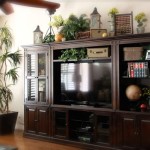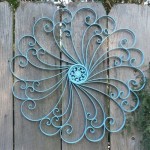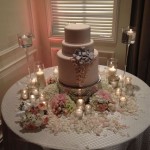Decorative Pot Covers for Plants
Decorative pot covers offer an easy and affordable way to enhance the aesthetic appeal of houseplants. They provide a stylish layer over standard plastic or terracotta pots, concealing their often plain appearance and adding a touch of personality to any space. Whether it's a vibrant ceramic design, a rustic woven basket, or a sleek metallic finish, decorative pot covers can complement existing décor and elevate the overall presentation of indoor greenery.
Choosing the Right Material
The material of a pot cover contributes significantly to both its aesthetic and functional qualities. Ceramic covers are a popular choice, offering a wide range of colors, patterns, and textures. Their durability and water resistance make them suitable for various environments. Woven materials like seagrass, rattan, and jute bring a natural, bohemian touch to indoor spaces, creating a warm and inviting atmosphere. Metal covers, often made of brass, copper, or galvanized steel, provide a modern and minimalist look. Plastic covers are a lightweight and budget-friendly option, often mimicking the appearance of more expensive materials like ceramic or stone.
Size and Fit Considerations
Selecting the correct size is essential for a polished and cohesive look. The pot cover should be slightly larger than the plant's nursery pot, allowing for easy placement and removal. A general rule of thumb is to choose a cover that is one to two inches larger in diameter than the base pot. This provides enough space for air circulation and prevents the roots from becoming waterlogged. Measuring the diameter and height of the existing pot before purchasing a cover ensures a proper fit and avoids a top-heavy or unstable arrangement.
Drainage and Plant Health
While decorative pot covers enhance aesthetics, they can also pose challenges for plant health if not managed correctly. Unlike nursery pots, most decorative covers lack drainage holes. This can lead to excess water accumulating at the bottom, increasing the risk of root rot and other fungal diseases. To mitigate this, it's crucial to avoid directly planting into the decorative cover. Instead, keep the plant in its original nursery pot and place it inside the cover. After watering, allow excess water to drain completely from the nursery pot before placing it back into the cover. Alternatively, a layer of pebbles or stones at the bottom of the cover can create an elevated surface for the nursery pot, promoting drainage and preventing the roots from sitting in water.
Style and Design Options
Decorative pot covers offer a vast array of style and design options to suit any taste and interior design scheme. For a contemporary aesthetic, sleek geometric patterns, metallic finishes, or minimalist designs can complement modern furniture and décor. Those seeking a more traditional look might opt for classic ceramic covers with floral patterns or ornate detailing. Natural and rustic styles can be achieved with woven materials, terracotta, or concrete covers. The variety of available designs ensures that anyone can find a pot cover that perfectly complements their personal style and existing décor.
Incorporating Pot Covers into Interior Design
Strategically placed pot covers can significantly enhance the overall aesthetic of a room. Grouping plants of varying heights and sizes in complementary covers can create a visually appealing focal point. Utilizing different materials and textures can add depth and interest to a space. For example, pairing a woven seagrass cover with a sleek ceramic one can create a dynamic contrast. Pot covers can also be used to tie together different elements of a room's décor, echoing colors or patterns found in furniture, textiles, or artwork.
Cleaning and Maintenance
Proper cleaning and maintenance will help preserve the appearance and longevity of decorative pot covers. Ceramic and plastic covers can be easily wiped clean with a damp cloth. Woven materials may require brushing or vacuuming to remove dust and debris. Metal covers should be polished occasionally to maintain their shine and prevent tarnishing. Regularly inspecting covers for cracks, chips, or other damage ensures their continued functionality and aesthetic appeal.
Sustainability Considerations
When choosing decorative pot covers, consider their environmental impact. Opt for covers made from sustainable materials like bamboo, recycled plastic, or reclaimed wood. Supporting companies that prioritize ethical sourcing and production practices contributes to a more environmentally conscious approach to home décor.

Planter Pot Cover For Indoor Plant Set Of 3

Diy Moss Potted Plant Decorative Cover For Basket
The No Sew Trick For Adorable Diy Flower Pot Covers

Large Plant Pot Cover Handmade From Felt Nordic Home Decor Indoor Planter Possible In Custom Size Houseplants Accesories

Soil Cover For Indoor Plants 8 Great Ideas To Try Bright Lane Gardens

Make Your Own Decorative Plant Pot Covers Flying Bulldogs Inc

Kiizys Decorative Plant Pot Covers For Indoor Plants 5 6 8 Inch Green Reversible

Eco Friendly Upcycled Fabric Pot Plant Cover Green And Turquoise Decorative Indoor Planters New Zealand

Plant Pot Cover Make Your Pots An Attractive Feature

Diy Moss Potted Plant Decorative Cover For Basket








